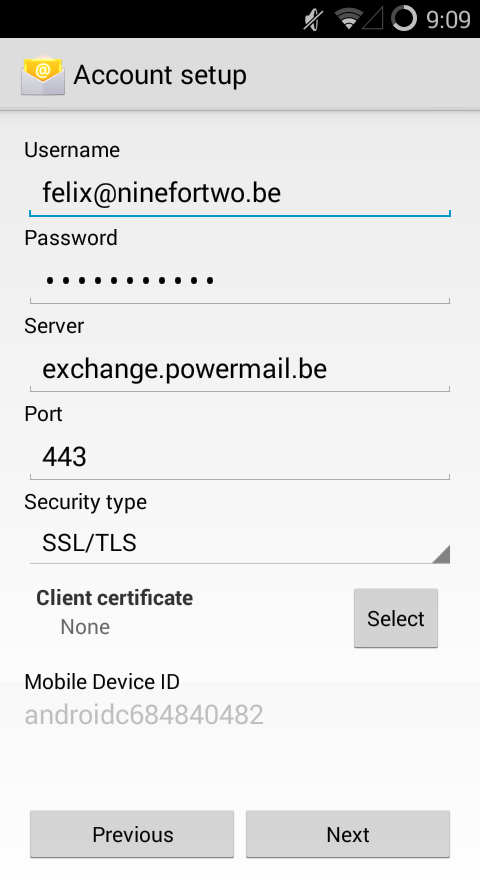

- #Exchange client android how to#
- #Exchange client android for android#
- #Exchange client android trial#
- #Exchange client android windows#
Open the Outlook application's Configuration tab and specify the following configurations:
#Exchange client android how to#
#Exchange client android for android#
How to Configure the Outlook Email for Android Users This method is applicable to devices which are enrolled using Android Fully Managed Device mode or Android Work Profile.Managed Google Play Enterprise must be enabled and configured on the Miradore site.You will need to have Administrator or Editor rights on the Miradore site.
#Exchange client android trial#

We believe the changes we’re implementing are the right approach for improving the overall security for Outlook for iOS and Android devices by only skipping Exchange mobile device access rules when the device is managed by Intune. Therefore, we recommend administrators only set mobile device access policies for Outlook for iOS and Android that allow/block devices based on device type or device model. When this happens, it can cause unintended consequences when device IDs are used for managing user devices, as existing 'allowed' devices may be unexpectedly blocked or quarantined by Exchange. Important: Because Outlook for iOS and Android’s device IDs are not governed by any physical device ID, the ID can change without notice.
#Exchange client android windows#
This conditional access policy targets the Windows platform and leverages the following grant access controls: Today, if you configure any conditional access policy (regardless of its applicability to mobile devices), Exchange Online will skip mobile device access rules’ processing for Outlook for iOS and Android devices.įor example, let’s say in your tenant you have no conditional access policies targeting iOS or Android devices, but you have a policy that ensures Windows devices are managed. This article describes how these policies work today and what is changing in August 2020. What you may not know is the interaction between Exchange’s mobile device access rules and Azure Active Directory Conditional Access policies when using Outlook for iOS and Android. Likewise, many of you have moved away from leveraging Exchange mobile device access rules and moved to a more comprehensive solution – Azure AD Conditional Access policies. Set-ActiveSyncOrganizationSettings -DefaultAccessLevel Įxchange mobile device access rules can even be used to manage Outlook for iOS and Android see Block all email apps except Outlook for iOS and Android for examples. Admins can change this behavior to either block or quarantine devices with the following cmdlet: By default, an Exchange Online tenant allows access for all mobile devices. Many of you may rely on Exchange Online mobile device access rules to ensure that only approved devices (or apps) access your messaging data.


Update: the change mentioned in this article has been rolled out to all commercial tenants.


 0 kommentar(er)
0 kommentar(er)
